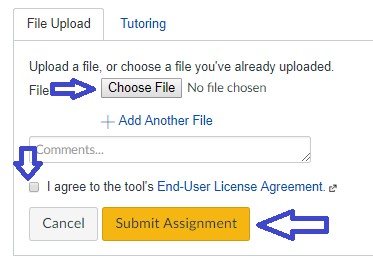Properly identifying the cause and type of a patient’s skin condition involves a process of elimination known as differential diagnosis. Using this process, a health professional can take a given set of physical abnormalities, vital signs, health assessment findings, and patient descriptions of symptoms, and incrementally narrow them down until one diagnosis is determined as the most likely cause.
In this Lab Assignment, you will examine several visual representations of various skin conditions, describe your observations, and use the techniques of differential diagnosis to determine the most likely condition.
To Prepare
Review the Skin Conditions document provided in this week’s Learning Resources, and select one condition to closely examine for this Lab Assignment.
Consider the abnormal physical characteristics you observe in the graphic you selected. How would you describe the characteristics using clinical terminologies?
Explore different conditions that could be the cause of the skin abnormalities in the graphics you selected.
Consider which of the conditions is most likely to be the correct diagnosis, and why.
Search the Walden library for one evidence-based practice, peer-reviewed article based on the skin condition you chose for this Lab Assignment.
Review the Comprehensive SOAP Exemplar found in this week’s Learning Resources to guide you as you prepare your SOAP note.
Download the SOAP Template found in this week’s Learning Resources, and use this template to complete this Lab Assignment.
The Lab Assignment
Choose one skin condition graphic (identify by number in your Chief Complaint) to document your assignment in the SOAP (Subjective, Objective, Assessment, and Plan) note format rather than the traditional narrative style. Refer to Chapter 2 of the Sullivan text and the Comprehensive SOAP Template in this week’s Learning Resources for guidance. Remember that not all comprehensive SOAP data are included in every patient case.
Use clinical terminologies to explain the physical characteristics featured in the graphic. Formulate a differential diagnosis of three to five possible conditions for the skin graphic that you chose. Determine which is most likely to be the correct diagnosis and explain your reasoning using at least three different references, one reference from current evidence-based literature from your search and two different references from this week’s Learning Resources.
REQUIRED READINGS
Ball, J. W., Dains, J. E., Flynn, J. A., Solomon, B. S., & Stewart, R. W. (2019). Seidel’s guide to physical examination: An interprofessional approach (9th ed.). St. Louis, MO: Elsevier Mosby.
Chapter 9, “Skin, Hair, and Nails”
This chapter reviews the basic anatomy and physiology of skin, hair, and nails. The chapter also describes guidelines for proper skin, hair, and nails assessments.
Colyar, M. R. (2015). Advanced practice nursing procedures. Philadelphia, PA: F. A. Davis.
Credit Line: Advanced practice nursing procedures, 1st Edition by Colyar, M. R. Copyright 2015 by F. A. Davis Company. Reprinted by permission of F. A. Davis Company via the Copyright Clearance Center.
This section explains the procedural knowledge needed prior to performing various dermatological procedures.
Chapter 1, “Punch Biopsy”
Chapter 2, “Skin Biopsy”
Chapter 10, “Nail Removal”
Chapter 15, “Skin Lesion Removals: Keloids, Moles, Corns, Calluses”
Chapter 16, “Skin Tag (Acrochordon) Removal”
Chapter 22, “Suture Insertion”
Chapter 24, “Suture Removal”
Dains, J. E., Baumann, L. C., & Scheibel, P. (2019). Advanced health assessment and clinical diagnosis in primary care (6th ed.). St. Louis, MO: Elsevier Mosby.
Credit Line: Advanced Health Assessment and Clinical Diagnosis in Primary Care, 6th Edition by Dains, J.E., Baumann, L. C., & Scheibel, P. Copyright 2019 by Mosby. Reprinted by permission of Mosby via the Copyright Clearance Center.
Chapter 28, “Rashes and Skin Lesions”
This chapter explains the steps in an initial examination of someone with dermatological problems, including the type of information that needs to be gathered and assessed.
Note: Download and use the Student Checklist and the Key Points when you conduct your assessment of the skin, hair, and nails in this Week’s Lab Assignment.
Ball, J. W., Dains, J. E., Flynn, J. A., Solomon, B. S., & Stewart, R. W. (2019). Skin, hair, and nails: Student checklist. In Seidel’s guide to physical examination (9th ed.). St. Louis, MO: Elsevier Mosby.
Credit Line: Seidel’s Guide to Physical Examination, 9th Edition by Ball, J. W., Dains, J. E., Flynn, J. A., Solomon, B. S., & Stewart, R. W. Copyright 2019 by Elsevier Health Sciences. Reprinted by permission of Elsevier Health Sciences via the Copyright Clearance Center.
Ball, J. W., Dains, J. E., Flynn, J. A., Solomon, B. S., & Stewart, R. W. (2019). Skin, hair, and nails: Key points. In Seidel’s guide to physical examination: An interprofessional approach (9th ed.). St. Louis, MO: Elsevier Mosby.
Credit Line: Seidel’s Guide to Physical Examination, 9th Edition by Ball, J. W., Dains, J. E., Flynn, J. A., Solomon, B. S., & Stewart, R. W. Copyright 2019 by Elsevier Health Sciences. Reprinted by permission of Elsevier Health Sciences via the Copyright Clearance Center.
Sullivan, D. D. (2019). Guide to clinical documentation (3rd ed.). Philadelphia, PA: F. A. Davis.
Chapter 2, “The Comprehensive History and Physical Exam” (Previously read in Weeks 1 and 3)
VisualDx. (n.d.). Clinical decision support. Retrieved June 11, 2019, from http://www.skinsight.com/info/for_professionals
This interactive website allows you to explore skin conditions according to age, gender, and area of the body.
Clothier, A. (2014). Assessing and managing skin tears in older people. Nurse Prescribing, 12(6), 278–282.
This document contains five images of different skin conditions. You will use this information in this week’s Discussion.
Document: Comprehensive SOAP Exemplar (Word document)


 For any questions, feedback, or comments, we have an ethical customer support team that is always waiting on the line for your inquiries.
For any questions, feedback, or comments, we have an ethical customer support team that is always waiting on the line for your inquiries.